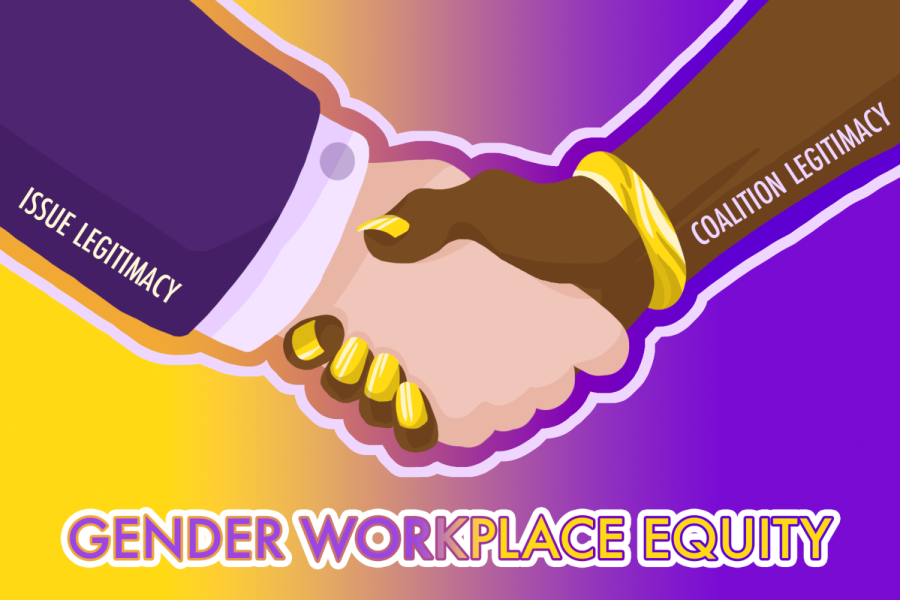McCombs professor finds mixed-gender teams in workplace can fight gender inequality
October 1, 2022
Mixed-gender coalitions and team unity in the workplace are more likely to grab managers’ attention and fight gender inequity, according to a new McCombs study.
Insiya Hussain, assistant professor of management, conducted a study on gender in the workplace and said that when women and men work together for gender equality in the workspace, as opposed to working separately, they are more likely to influence managers to address the issue and create reform, like raising women’s salaries.
“Even though the majority of these advocacy efforts are undertaken by women, there’s a sense that it’s not enough if you want to get managers to take the gender equity issue seriously,” Hussain said. “We’ve been asking men to get involved more and more to participate as allies.”
Hussain said she created the foundation for this study by combining two terms: issue legitimacy and coalition legitimacy. According to Hussain’s research, published in the Academy of Management Journal, coalition legitimacy refers to whether a specific messenger is right to speak on an issue, which is the piece that men relatively lack on the topic of gender-based inequalities that primarily tend to concern women. Issue legitimacy questions whether or not an issue itself is important, which is what women have more trouble signaling to their managers, according to the study.
“In the social world, we have these informal norms about who has standing and who has legitimacy to speak up about or protest an issue,” Hussain said. “(Men) bring this other piece, which is that they make the issue seem more important. … That shouldn’t necessarily be the case, but at least today, we find that that effect still exists. And part of it might just be because men … have traditionally been more privileged in organizations.”
In the study, Hussain had managers and survey participants listen to a gender equality proposal from a pair of employees: one with two males, one with two females and one mixed-gender (male and female). Results showed that mixed-gender coalitions earned the highest support from managers, as they were seen as sufficiently signaling both issue and coalition legitimacy.
“It did line up very well with our theory, and I did go into it thinking that men and women would each bring these two points of legitimacy, and so mixed-gender coalitions would be higher on both,” Hussain said.
Corporate communication senior Ariana Mollai said that in her internship as a design consultant, she has experience with mixed-gender coalitions and has a productive outcome with them.
“I think the company I work with did a really good job of balancing hiring women and men,” Mollai said. “Having diversity when it comes to gender is very important because it just gives everyone a different point of view.”
Government senior Gabrielle Griffey said the information found in the study has the potential to form a bridge and improve gender equity in the workplace.
“That (study) being reinforced in conversations (is needed) because conversations lead to culture, and culture leads to things that extend outside of the workplace,” Griffey said.



